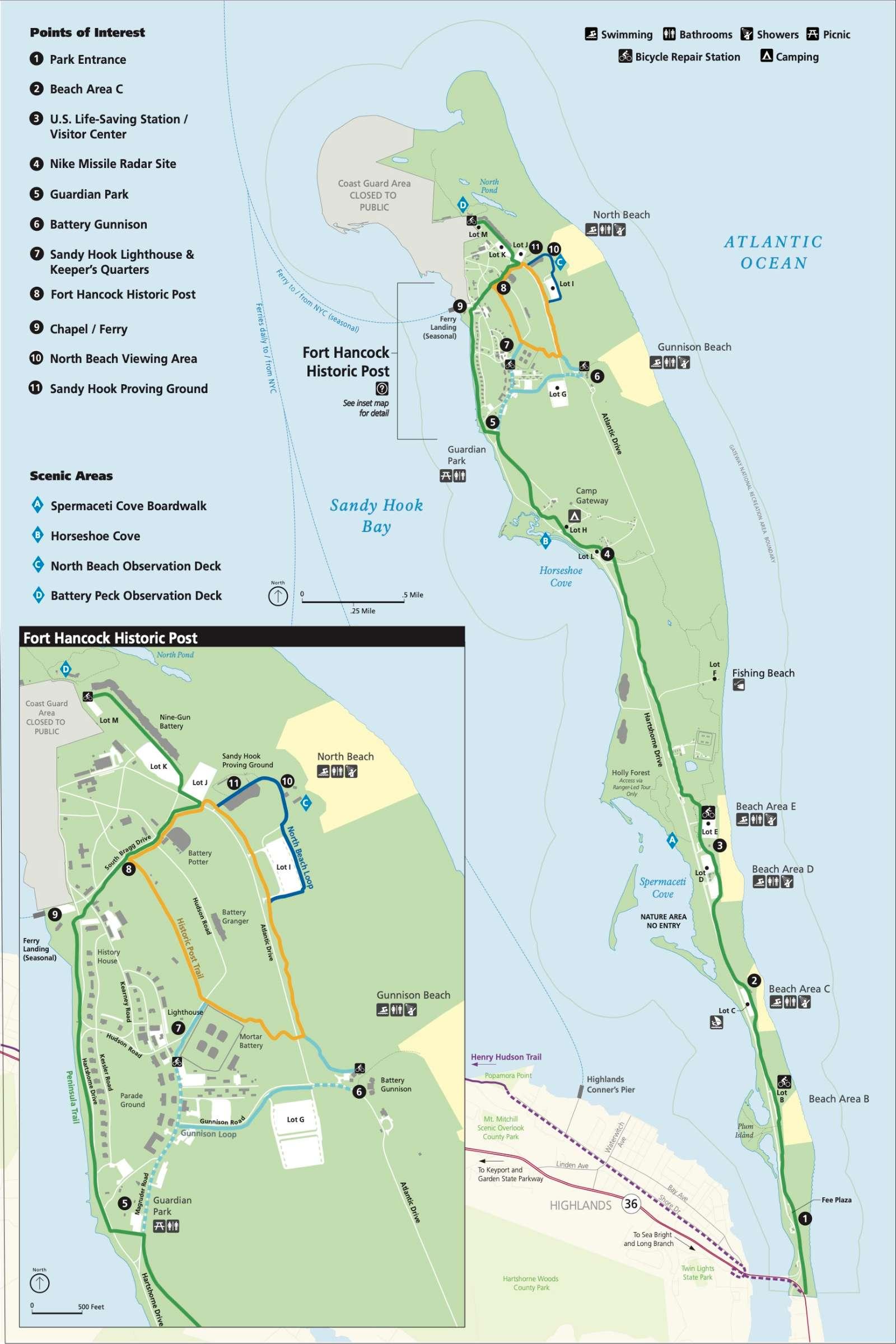Sandy Hook
Tips for Birding
It is most helpful when submitting eBird observations at Sandy Hook to start a new checklist for each hotspot within the National Recreation Area. Use this general hotspot when you have a checklist that includes multiple locations or there was not a hotspot or personal location appropriate for your sightings.
Birds of Interest
Sandy Hook is a common place for vagrants to end up, possibly due to the geography of the area. However, it is also renowned for its common birds as it offers close views of many of the Northeast's more sought-after coastal birds.
Winter: Black, Surf, and White-winged Scoters; Common (and rarely King) Eiders; Great Cormorants; Razorbills; Northern Gannets; Iceland and Glaucous Gulls (uncommon to rare); Horned Larks; Snow Buntings; Lapland Longspurs (often only 1 in a flock of Horned Larks or Snow Buntings, but annual and consistent); Ipswich Savannah Sparrows
Summer Breeders: Least Tern, Black Skimmer, Roseate Tern (uncommon), American Oystercatcher, Piping Plover, Red Knot (uncommon), American Woodcock, Glossy Ibis, Clapper Rail, Boat-tailed Grackle
Sandy Hook is great for migrating shorebirds, thrushes, vireos, warblers, etc. in April/May and September/October.
About Sandy Hook (Gateway National Recreation Area)
See all hotspots at Sandy Hook (Gateway National Recreation Area)
Sandy Hook is part of the Gateway National Recreation Area (NRA), which includes parts of Staten Island, New York, and Jamaica Bay, New York. Sandy Hook is the only part of the National Recreation Area that is part of New Jersey and is the name given to the whole peninsula.
Gateway NRA's Sandy Hook Unit covers most of the Sandy Hook peninsula off the coast of central New Jersey. There you will find miles of beaches, overnight camping, the oldest continuously operating lighthouse in the county, the Fort Hancock and Sandy Hook Proving Ground National Historic Landmark, and a former life-saving station.
The peninsula includes a popular Multi-Use Path (MUP), ideal for people taking a walk, using rollerblades, or riding a bicycle. Bikes can also use the road but must obey traffic laws. Those who use the ferry to arrive at Sandy Hook in the summer should take a bus map to see what beaches they can access.
The northern tip of the peninsula is an active Coast Guard facility and is off-limits to visitors.
For centuries, the safest way to sail into New York Harbor was by hugging the shore of Sandy Hook, where the water was deepest. This six-mile peninsula had an outsize influence on the safety of the harbor and the defense of New York City. From its days as a British colony and outpost to the era of nuclear missiles, Sandy Hook lighted the paths of seafarers and protected New Yorkers from potential attack and invasion. Since the Federal government completed the purchase of the entire peninsula in 1814, it was spared the commercial development that dominates much of the New Jersey coast. In 1982, the Sandy Hook peninsula was designated as the Fort Hancock and Sandy Hook Proving Ground National Historic Landmark.
Unlike the rest of Monmouth County, the dominant chickadee species is Black-capped Chickadee. eBird will flag it (because it would be rare in the rest of Monmouth County), but if you note in the species comments that you are at Sandy Hook, the eBird reviewer will accept the sighting without additional documentation.
Features
Restrooms on site
Wheelchair accessible trail
Entrance fee
Roadside viewing
Content from Sandy Hook (Gateway National Recreation Area) Official Website
Last updated March 13, 2024
